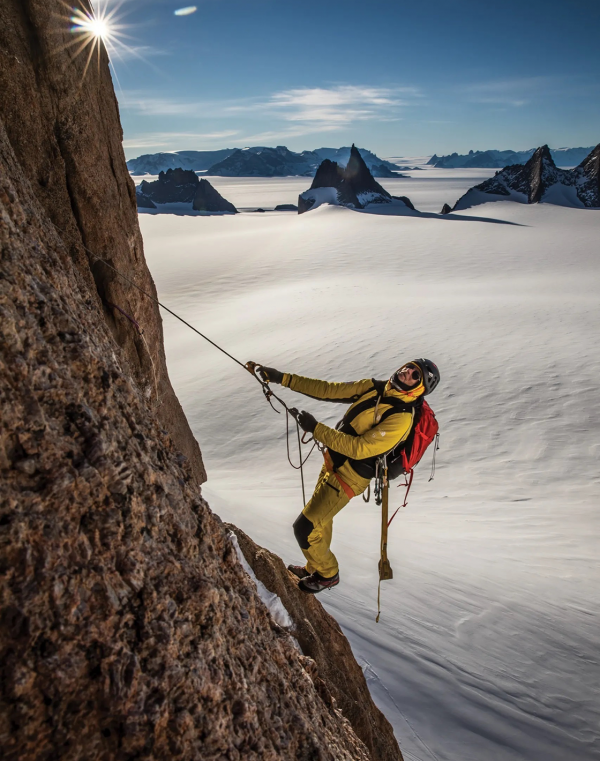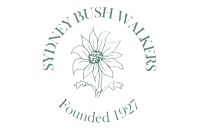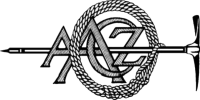- Home
- Nepal
- Adventure Activities
- Peak Climbing
- Mountain Expedition
- Local Tours
- Sirubari Village Homestay
- Ghale Gaun
- Kalinchowk Tour
- Halesi Mahadev - Maratika Cave package
- Chitwan Jungle Safari
- Day tour in Kirtipur
- Day tour in Kathmandu City
- Spiritual Tour to Muktinath
- Chitlang and Kulekhani
- Bardiya National Park
- Jeep Tour to Rara Lake
- Gosaikunda Lake
- Manakamana day Tour with cable-car ride
- 4WD Jeep Tour to Upper Mustang
- Family Holidays
- Heli & Mountain Flights
- Trekking Routes
- Kailash Mansarovar
- Bhutan
- Tibet
- Multi Country
- Domestic Flights
- Contact
- Home
- Nepal
- Adventure Activities
- Peak Climbing
- Mountain Expedition
- Local Tours
- Sirubari Village Homestay
- Ghale Gaun
- Kalinchowk Tour
- Halesi Mahadev - Maratika Cave package
- Chitwan Jungle Safari
- Day tour in Kirtipur
- Day tour in Kathmandu City
- Spiritual Tour to Muktinath
- Chitlang and Kulekhani
- Bardiya National Park
- Jeep Tour to Rara Lake
- Gosaikunda Lake
- Manakamana day Tour with cable-car ride
- 4WD Jeep Tour to Upper Mustang
- Family Holidays
- Heli & Mountain Flights
- Trekking Routes
- Kailash Mansarovar
- Bhutan
- Tibet
- Multi Country
- Domestic Flights
- Contact
Tour to Bhutan

An exciting Trekking experience
Bhutan offers an unexposed terrain and heritage sites that have been diligently aloof from rest of world for centuries. 6 nights 7 days Bhutan Tour is relatively short and easy tour that provides countless opportunity to witness stunning views of unexplored snow-capped mountains with several beautiful hamlets and monasteries alongside. This comprehensive tour wander exploring the antique sites of Thimpu, Kuenselcholing View Point, forest of bamboo, juniper, magnolia, rhododendron and numerous small streams of mountain water.
2+
Detailed Itinerary
- DAY 01: ARRIVE IN PARO AIRPORT
Arrive at Paro Airport and then drive to the capital city Thimphu. Altitude: 2320m/ 7656ft above sea level. (1 hour 30 minutes drive) The flight into the Himalayas reveals scenic and breathtaking views of Himalayan Mountains of the world. If weather permits you will be able to see Mt Everest (8848m, 29,198ft) and other Himalayan mountain ranges. After checking into the hotel later your representative from the agency will greet you on arrival and drive you to the capital city, Thimphu. On the way to Thimphu visit, Tamchhog Lhakhang which is located on the opposite side of the river. This is a temple built by Thang Thong Gyalpo of Tibet, who was responsible for building numerous iron bridges throughout Bhutan. Kuenselcholing View Point: A place from where you can get a good overview of the Thimphu valley is from the Buddha point (Kuensel Phodrang). It is again a short drive from the town. You can pay your obeisance and offer prayers to the Buddha, the largest statue in the country and then walk around and take a glimpse of the valley. Memorial Chorten: This particular chorten was constructed in 1974 as a memorial for the third King of the country, King Jigme Dorji Wangchuck, who is widely regarded as the father of modern Bhutan. Tashichho Dzong : The names means – Means Fortress of Glorious Religion. It was built in 1641 by Zhabdrung Ngawang Namgyel. It houses the secretariat building, the throne room and the office of the king, and the central monk body. Later relax for the day and stroll around the city. Overnight in Thimphu - DAY 02: IN THIMPHU
Morning take a hike to Cheri Monastery (Includes Dodina and Jigme Dorji Wild life Sanctuary): Hike about 1hrs (to and fro) leds to Cheri Goemba (Cheri Dorji Dhen). Zhabdrung Ngawang Namgyal built this monastery in 1620 and established the first monk body here. A chance to spot birds such as Mrs Gould’s Sunbird, Yellow-browed Tit, Yellow-rumped Honeyguide, Long-billed Thrush, Ultramarine Flycatcher. Paper factory: The handmade paper making in Bhutan stemmed from the age old tradition originated in 8th century of Bhutanese history. The handmade paper constitutes as valuable National heritage of Bhutanese cultural identity and is preserved through all the ages. The Traditional paper is recognized and held high esteem both in home and outside world. The weekend market: Held every Friday, Saturday and Sunday, the people crowd the stalls every day, dressed in full colour and gathered to meet and to barter, much like the street markets in London! Bhutan Craft bazaar: The private stalls had a variety of high-end quality products from places across the country such as wood carved national symbols, bags and western wears with touch of traditional designs, wooden and clay utensils, Bangchung, Dhapa, key hanger of jewelry boxes, bookmarks and handmade packing papers (Deysho) in different patterns, antique items and etc. The stalls have a distinctly rich outlook with fine tones of elegance, and a warm and inviting atmosphere. The craft bazaar is also an exemplary of how bamboo can be used to construct houses in the country. Later you can stroll around the city. Overnight in Thimphu. - DAY 03: THIMPHU TO GANGTEY
Altitude: 2800m/ 9240ft above sea level (5 hours drive) Morning driving towards Gangtey, we come across a pass known as Dochula (3140m, 10362ft) from where a beautiful panoramic view of the Himalayan mountain range can be seen, especially in clear winter days. The beauty of this place is further enhanced by the Druk Wangyal Chortens- a 108 stupas built by the eldest Queen, Her Majesty Ashi Dorji Wangmo Wangchuck. In the mountains east of Wangdue Phodrang lies the beautiful Phobjikha valley, on the slopes of which is situated the great monastery of Gangtey, established in the 17th century. The village of Phobjikha lies a few km. down from the monastery, on the valley floor. This quiet, remote valley is the winter home of black necked cranes, which migrate from the arid plains of Tibet in the north, to pass the winter months in a milder climate. Overnight in Gangtey. - DAY 04: GANGTEY TO PUNAKHA/WANGDUE
Altitude: 2800m/ 9240ft above sea level (2 hours drive) Morning visit, Gangtey Goemba: In the mountains east of Wangdue Phodrang lies the beautiful Phobjikha valley, on the slopes of which is situated the great monastery of Gangtey, established in the 17th century. The village of Phobjikha lies a few km. down from the monastery, on the valley floor. This quiet, remote valley is the winter home of black necked cranes, which migrate from the arid plains of Tibet in the north, to pass the winter months in a milder climate. Hike to Chimi Lhakhang(Temple of fertility): This Temple was built by lam Drukpa Kuenley (The Divine Madman) in 1499. It is about thirty minutes hike across fields from the road –Wooden phalluses are often found hanging in the four corners of the houses and also phalluses are painted on the walls of houses. It is the common belief that this helps in driving away evil spirits.(30 minutes hike to and fro, gentle steep, good footh path across the valleys and villages) Overnight in Punakha. - DAY 05:PUNAKHA/WANGDUE TO PARO
Altitude: 2280m/7524ft above sea level.(4 hours drive) Morning Visit, Punakha Dzong (fortress): Built in 1637 by Zhabdrung which is remarkably located between the rivers of Mo (Female) Chu (river) and Pho (Male) Chu. Until the time of second king it served as a seat of the king.
Later drive to Paro and later visit, Rimpung Dzong: The Bhutanese Dzongs are huge architectural structures constructed for a variety of functions throughout the country, from administrative buildings to monasteries and temples, yet they are carefully and thoughtfully designed and are strikingly beautiful. The Rimpung Dzong, known as the “fortress of the heap of jewels” in the picturesque setting of the Paro valley, is of course no exception, built in the time of the dynamic spiritual and political leader Zhabdrung in 1644. Once a year, as part of the Tsechu festival, one of the oldest Thongdol (gigantic scroll paintings) is ceremonially unfurled here. Kichu Lhakhang(Monastery): It is one of the two most sacred and the oldest temples in Bhutan. It was built in 7th century by Tibetan King Songtsen Gampo. Overnight in Paro. - DAY 06: IN PARO
Morning hike to Taktshang Monastery (Tiger’s nest): This is Bhutan’s most recognizable cultural icon perched 800m/2640ft up a seemingly sheer cliff. Although it was tragically and mysteriously consumed by fire in April 1998 it has now been restored to its former glory. It is believed that in the 8th century, the great tantric master Guru Rimopche/ Padmasambhava (2nd Buddha) flew on the back of a tigress to the site where the monastery now stands. (Five hours hike to and fro, some gentle and some steep hike, some stony foot path and some good ones) If you ride a horse upward it will cost extra US$25 per person. Visit Farmhouse: Picturesque farm houses dot the valley amongst fields and hillsides. We welcome you to enjoy the hospitality of the Paro farmers. Thrill yourself as the farmers welcome you to their homes with genuine smiles. The two to three-storied Bhutanese farm houses are handsome in appearance, with colorfully decorated outer walls and lintels, and are traditionally built. A visit to a farm house gives an interesting glimpse into the lifestyle of a farming family. (If you take hot stone bath in the farm house it will cost extra US$25 per person.)Later stroll around the town and see how locals live.Overnight in Paro. - DAY 07: DEPART FROM PARO
Early breakfast at the hotel and then drive to the airport. Your escort will assist you with exit formalities and bid you farewell.
This trip can be redesigned or redeveloped as per your taste, For more information please e-mail us at This email address is being protected from spambots. You need JavaScript enabled to view it.
Cost and dates
We do small group trek or private trip as your request.
For quick information / contact us at whatsapp/viber + 977 9841815039
Or Drop us inquiry at This email address is being protected from spambots. You need JavaScript enabled to view it.
Tips & Resources
What's Included
- Private transportation.
- All necessary travel permits
- English speaking local guide.
- Accommodation on single/twin room basis.
- Sightseeing and monastery entrance fees as per the itinerary
- Meal plan: Full Board Basis
What's Excluded
- Insurance of any kind.
- Additional cost due to natural calamity and unforeseen circumstance
- Personal expenses such as drink, guide tips & etc.
Useful Info
Visa Information
Indian, Bangladeshis and Maldivian nationals can obtain a visa at the port of entry on producing a valid passport with a minimum of 6 month validity (Indian nationals may also use their Voters Identity Card (VIC). For other tourists, you will to need to acquire visa clearance in advance. Visas are processed through an online system by your licensed Bhutanese tour operator, directly or through a foreign travel agent. Tourists are also required to book their holiday through a Bhutanese tour operator or one of their international partners. The tour operator will take care of Visa arrangements for visitors.
You are required to send the photo-page of your passport (passport scanned copy) to your tour operator who will then apply for your visa. The visa will be processed by the Tourism Council of Bhutan (TCB) once the full payment of your holiday (including a USD $50 visa fee) has been wire transferred and received in the TCB bank account. Once received the visa clearance will be processed within 72 working hours. At your point of entry you will be required to show your visa clearance letter, and the visa will then be stamped into your passport.
Weather Information
There is no appropriate season as which is go say that Bhutan’s warm and temperate climate, never-ending festivals and rich and abundant heritage sites provide visitors with a wide array of experiences throughout the year across the country. Bhutan has all four seasons and the climate varies widely depending on the altitude.
Spring (March, April & May) - This time is considered the most beautiful time of the year, resplendent and ablaze with a spectacular array of bright colors. This is the time when the valleys are green with fresh vegetation and fruit trees are blossoming – the time when locals are naturally mirthful and cheery; when visitors are most welcome. Also, you can witness the famous Paro tsechu festival.
Autumn (September, October & November) - Autumn is lovely with clear and crisp blue skies, providing a grand view of some of the tallest unclimbed mountains in the world. It is the best time for trekking and traveling. The climate is cool and temperate and you can get lovely photography opportunities of willows shedding their golden brown leaves, the solitude of parks and somber views of dzongs and monasteries.
Monsoon (June, July & August) - During these months, Bhutan receives more rainfall than any other region in the Himalayas. Glorious sapphire skies and warm weather is a pleasant time to spend visiting places of cultural and historical interest though this season is not the best time for trekking. Enjoy a cup of warm, aromatic tea while watching the rainfall from your hotel window. Or if you possess an adventurous spirit, grab an umbrella/raincoat while it is raining and take a day tour through the town.
Winter (December, January & February) - Winter in Bhutan is sunny, cool and agreeable to say the least. Much of the east-west highway remains snowbound during winter. It is the best time to tour the western districts of Paro, Wangdue, Punakha, Thimphu and Haa. One of the chief attractions in winter is the beautiful Gangtey (Phobjikha) valley where you can expect to see a wide expanse of rolling plain with bamboo shrubs.
Safety Guidelines
- Credit cards are not a convenient source of payment in Bhutan as only a handful of hotels in a few places provide this facility. Also, only MasterCard and Visa. US dollars are the most convenient currency and are cashed by most banks.
- You should avoid drinking tap water altogether, but it is okay to use it for brushing your teeth. Bottled water is widely available and is best for drinking. It is also wise to carry water purification tablets when trekking in remote locations of Bhutan.
- The local currency is the Ngultrum, which is pegged to the Indian Rupee. Note: The Indian Rupee in denominations of 500 and 1000 are no longer accepted in Bhutan.
- Bhutan is the only country in the world that has banned the consumption and sale of tobacco, resulting in smoking being largely disallowed in public places. Having said that, consumption is not completely prohibited in Bhutan so if you want to smoke, bring your own cigarettes and ask your guide where you can light up. (seal opened pack only)
- Tuesdays are considered the national 'dry day,' with the sale of alcohol prohibited.
- When taking photos/filming inside Dzongs, monasteries, temples, or any religious institutions, check with your guide whether it is permitted as some areas do not allow it.
Visit us
-
JP Marga, Thamel, Kathmandu, Nepal
-
+977-01-5365371
-
+977 98418-15039
(Whats App, Viber & Telegram)








